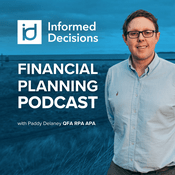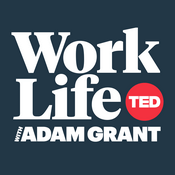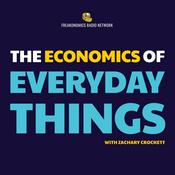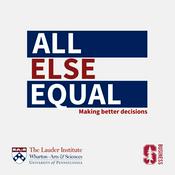145 episodes
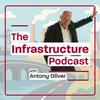
Canada's infrastructure ambition with Jennifer McKelvie
22/12/2025 | 33 mins.
In this last episode of 2025 we once again look at Canada’s infrastructure market to compare and contrast the global scale of investment ambition on that side of the Atlantic.As such, it is my pleasure to welcome Jennifer McKelvie, Member of Parliament for Ajax, Ontario, and former deputy mayor of Toronto who has without question emerged over the last few years as one of the leading voices helping to steer Canada’s infrastructure investment transformation.So first some background: Canada stands at a pivotal moment in its infrastructure journey. From housing shortages and strained transit systems to the growing impacts of climate change, the country faces pressures that span geography, sectors, and generations. Yet this moment is also one of enormous opportunity. With a renewed federal focus on nation-building, Canada is reshaping how it plans, finances, and delivers the infrastructure that underpins its future prosperity.In her recent address to the Transforming Infrastructure Performance Summit hosted by Bentley Systems in Toronto, Jennifer outlined an ambitious vision for Canada to accelerate delivery of major projects, create of new federal agencies to drive housing supply, and strengthen the public-private partnership ecosystem. Key initiatives such as the launch of the Major Projects Office, establishment of Build Canada Homes, and support for Canada Infrastructure Bank’s expanding footprint, underline this as a moment defined by scale, speed, and strategic intent. And, of course, urgency - urgency to build and adapt in the face of an increasingly uncertain political relationship with the United States and to prepare communities for the climate realities already unfolding across the country.ResourcesJennifer McKelvie, Member of Parliament for Ajax, OntarioCanada Major Projects OfficeBuild Canada HomesCanada Housing Infrastructure FundBuilding Canada StrongCanada Public Transit FundDisaster Mitigation and Adaptation Fund Canada Infrastructure BankTransforming Infrastructure Performance Summit Toronto 2025

Hospital 2.0 with Emily King and Doug Baldock
15/12/2025 | 37 mins.
In this week's episode we’re taking a close look at the New Hospital Programme, a programme which has been described as perhaps the most ambitious National Health Service infrastructure investment in decades.The NHP programme is tasked with delivering a new generation of state-of-the-art hospitals across England. At its core is Hospital 2.0, a standardised, repeatable and industrialised approach to hospital design and delivery that promises greater certainty, faster construction, improved quality, predictable costs, and cutting-edge clinical environments. To explain the programme and how it will be delivered, I am joined by Doug Baldock, Technical Services Director, and Emily King, Director of Industrialisation at the NHP, two leaders central to shaping the technical, commercial and industrial strategy underpinning Hospital 2.0. And with a long-term pipeline backed by rolling five-year funding envelopes averaging around £3 billion a year from 2030, the programme aligns with the Government’s wider Industrial Strategy and aims not only to modernise the NHS estate but to boost innovation, strengthen supply chains and support economic growth across the UK.The scale of this challenge is immense: dozens of complex hospital schemes, varied site conditions, urgent RAAC rebuilds – and, of course, the need to rebuild public and industry confidence after years of delay and uncertainty. Yet with clearer planning assumptions, a 12-year £37bn Hospital 2.0 Alliance procurement, and deep engagement with suppliers, the programme now seeks to unlock the capability and investment needed for a sustainable long-term programme.Well let’s find out what it means in reality..Resources New Hospital Programme: Plan for ImplementationGovernment hospital investment press release Supplier Guide.Egan review 1998Latham review 1994

Infrastructure's digital transformation with Nathan Marsh
08/12/2025 | 31 mins.
In this week's episode we are once again discussing data, digital tools and the use of artificial intelligence and the way that it’s set to transform infrastructure performance.My guest today is Nathan Marsh, Senior Vice President for Europe, Middle East, Africa at software giant Bentley Systems, someone who has, to be honest, been immersed in tech challenges in one shape or another for his entire career in infrastructure. So Nathan is well placed to shed light on the way – and the pace - technology is shaping the sector.We are chatting today at the Bentley’s Year in Infrastructure 2025 conference in Amsterdam where Nathan has been discussing, amongst other things, the transformative role technology in shaping the future of national infrastructure.There is no question that over the last two decades the use and power of digital systems has evolved from basic 2D drawing tools, through the evolution of Building Information Modelling to give us the kind of software tools that are at last truly changing the way that engineers approach the design, construction and management of infrastructure assets.And as we have heard recently on previous episodes of the Infrastructure Podcast, in the short time since generative AI tools such ChatGPT have emerged and become mainstream, there is absolutely no doubt in anyone’s minds that AI is now taking every aspect of that technology revolution up a notch.Notwithstanding the clear – and potentially well founded – fears around the unintended consequences of accelerating the use of AI technology, few can rule out the potential for change that is around the corner. Certainly, the use of technology to provide better tools, smarter workflows and more connected data is key to changing and improving the outcomes generated in return for the vast investment planned for infrastructure – but how?So let’s get a bit more practical insight into what this technology might hold for infrastructure design, construction and management sector.Resources Bentley Systems Year in Infrastructure 2025UK government 10 year Infrastructure StrategyNathan Marsh Linked InBentley Systems website1st Battalion Welsh Guards Birmingham Moseley Rugby ClubLondon Welsh Rugby Football Club

Ground monitoring technology with Daniel Scott
01/12/2025 | 34 mins.
In this week's episode we’re diving into the world of digital ground movement monitoring – a rapidly evolving field that’s quietly transforming how we manage, maintain, and future-proof our critical infrastructure.Emerging into this market is Osprey Measurement Systems, a high-tech business spun out of University College London that’s using cutting-edge digital tools to bring greater precision, speed, and insight into ground movement – something that affects everything from railways and tunnels to utilities and city infrastructure.To help us understand the technology, the market, and the broader implications, I’m joined by Daniel Scott, co-founder and Chief Technology Officer at Osprey. Daniel’s background is nothing if not broad – he’s a former lecturer at UCL in civil and geomatic engineering and has worked on major UK infrastructure projects including Crossrail and the Channel Tunnel Rail Link.He's also a serving member of the 507 Specialist Team Royal Engineers focusing on railway infrastructure – more about that later, I’m sure!In this conversation, we explore the journey of OMS as a spin-out company, the power of reality capture and digital measurement to transform infrastructure delivery and monitoring, and what it takes to bring genuinely disruptive technology to a traditionally risk-averse sector – and how technology like this can shift the performance, efficiency, and safety of infrastructure assets.ResourcesOsprey Measurement SystemsDaniel Scott Linked InUniversity College London ground engineeringCrossrail lessons learned Channel Tunnel High Speed Rail 507 Specialist Team Royal Engineers

Canadian investment innovation with Divya Shah
24/11/2025 | 26 mins.
This episode was recorded live at the recent Transforming Infrastructure Performance summit held in Toronto, Canada in October and hosted by Bentley Systems. I’m joined by Divya Shah, Managing Director of the Trade & Transportation sector at the Canada Infrastructure Bank (CIB), an organisation at the forefront of this mission to deliver the infrastructure Canada needs to stay competitive and resilient.Infrastructure has always been central to Canada’s story — a vast country knitted together by railways, ports, roads, and power grids that enabled economic growth and connected communities. Today, the stakes are even higher. As Canada accelerates its transition to a low-carbon, resilient, and inclusive economy, infrastructure has never been more critical — or more political.The Canada Infrastructure Bank was created to act as a catalyst: unlocking private capital, supporting transformative projects, and enabling the kind of nation-building investment needed to meet 21st-century challenges. With more than $16.8 billion invested in 102 projects across the country, from clean power and green infrastructure to transit, broadband, and trade corridors, the CIB is reshaping the way Canada builds.But challenges remain. Canada faces shifting geopolitics, urgent climate targets, rising costs, and the need for stronger coordination between federal, provincial, and Indigenous partners. The question is not just how we build, but how we build faster, smarter, and more inclusively.ResourcesCanada Infrastructure BankDivya ShahTransforming Infrastructure Performance TIPLive TorontoBentley Systems websiteFor the video version of this podcast visit the Infrastructure Podcast YouTube
More Business podcasts
Trending Business podcasts
About The Infrastructure Podcast
Listen to The Infrastructure Podcast, The Diary Of A CEO with Steven Bartlett and many other podcasts from around the world with the radio.net app

Get the free radio.net app
- Stations and podcasts to bookmark
- Stream via Wi-Fi or Bluetooth
- Supports Carplay & Android Auto
- Many other app features
Get the free radio.net app
- Stations and podcasts to bookmark
- Stream via Wi-Fi or Bluetooth
- Supports Carplay & Android Auto
- Many other app features


The Infrastructure Podcast
download the app,
start listening.

